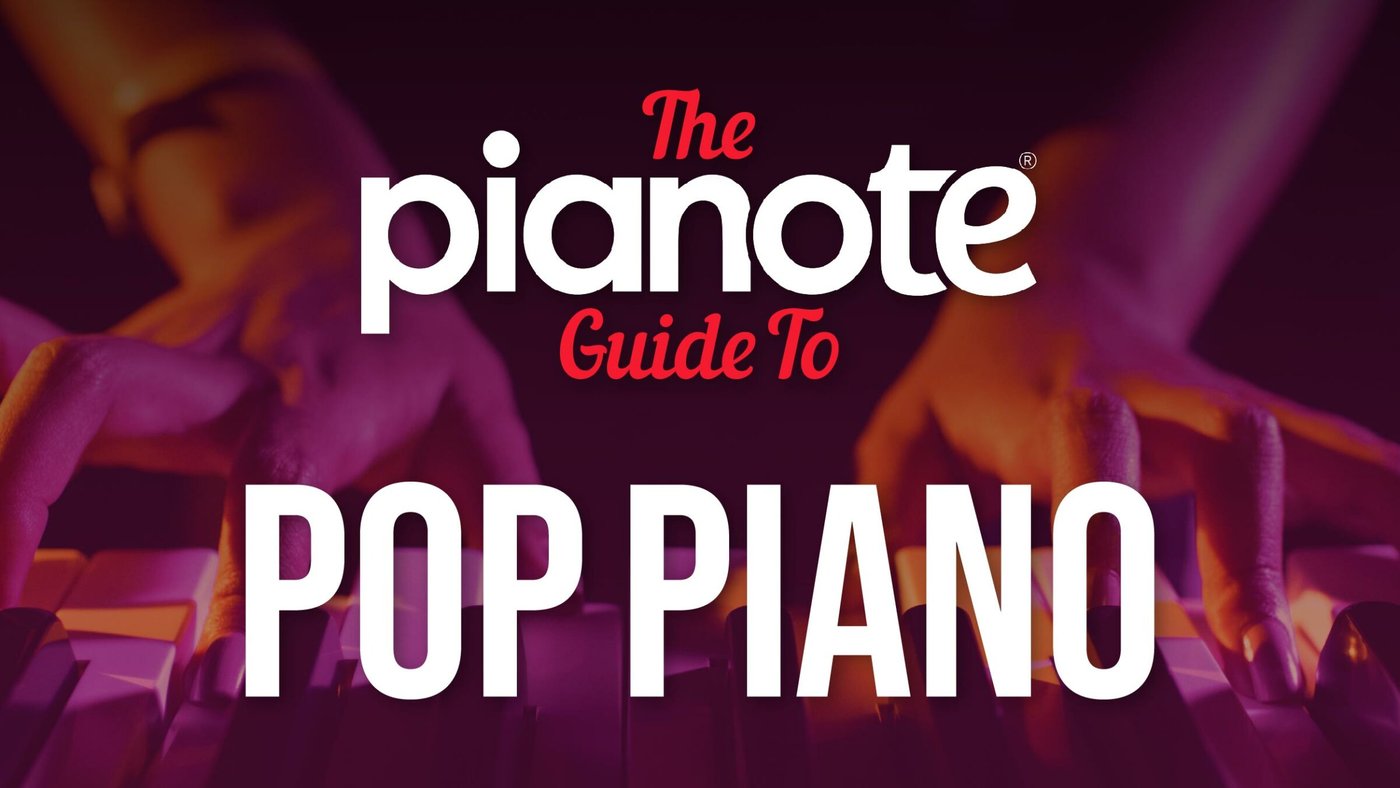
Chances are you’ve listened to pop music. And if pop is your genre of choice, you may want to learn how to play pop songs on the piano. It’s fun!
The piano can shine in virtually any genre, and it’s been a staple of pop music for decades. In this article, we’ll dive into the piano’s history in pop music, explore pop’s essential ingredients, review key skills you need to play pop songs on the piano, and listen to some iconic pop piano hits.
Table of Contents
Chapter 1: History of Pop Piano
1.1 What is “pop music”?
1.2 Pop Classical
Chapter 2: Playing Pop Songs on Piano – Essential Ingredients
Chapter 3: Mastering Pop Songs on Piano – Key Skills
3.1 Reading Chord Charts and Lead Sheets
3.2 Playing By Ear
3.3 Improvisation
3.4 Playing With a Band
To start us off, here are some iconic keyboard tracks from across the decades. We’ve also compiled a more thorough playlist at the end of this article.
> Click here to skip to the history of pop piano.
> You can also skip to learning about pop piano’s essential ingredients and key skills.
“Tutti-Frutti” by Little Richard (1955)
“Blueberry Hill” by Fats Domino (1956)
“My Baby Just Cares For Me” by Nina Simone (1957)
“Can’t Help Falling in Love” by Elvis Presley (1961)
“House of the Rising Sun” by the Animals (1964)
“Light My Fire” by the Doors (1967)
“Let It Be” by the Beatles (1970)
“Imagine” by John Lennon (1971)
“Rocket Man” by Elton John (1972)
“The Rose” by Bette Midler (1980)
“Don’t Stop Believin'” by Journey (1981)
“Right Here Waiting” by Richard Marx (1989)
Check out our article on the top 10 iconic synth riffs from the 80s.
“Nightswimming” by R.E.M. (1992)
“A Long December” by Counting Crows
“Angel” by Sarah McLachlan (1998)
“A Thousand Miles” by Vanessa Carlton (2000)
“Mad World” – version by Gary Jules (2001)
“Clocks” by Coldplay (2003)
“Someone Like You” by Adele (2011)
“All of Me” by John Legend (2013)
“When I Was Your Man” by Bruno Mars (2013)
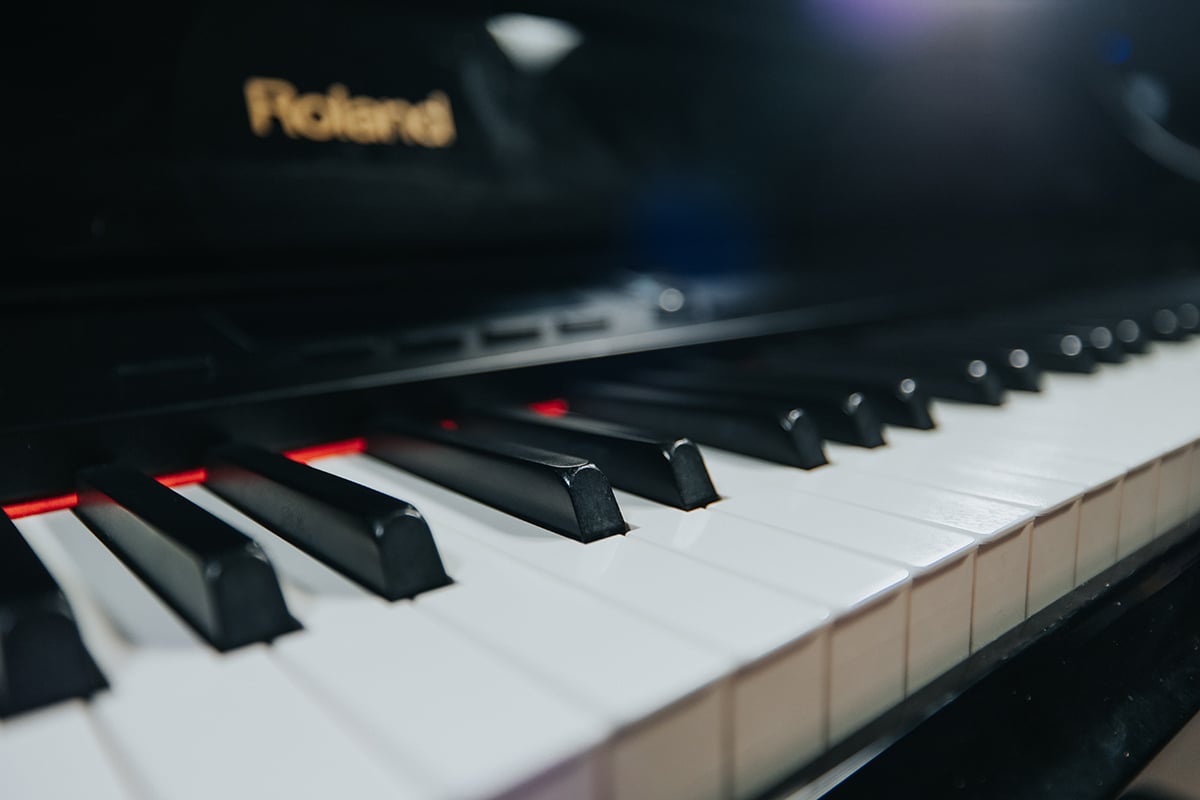
Defining pop music is a little nebulous. And while pop is associated with commercialism, consumerism, and prioritizing good looks over technical skill, we don’t believe anyone should be shamed for enjoying it. After all, not everyone can craft a Top 40 hit. And a song that gets stuck in your head is, in many respects, well-written.
Pop music is not a genre, per se, but rather a category of music that is popular at the time. Therefore, depending on trends, several different genres can be found in the Top 40: pop, rock, hip-hop, R&B, country, and more.
European classical music (ie. Mozart and Beethoven) and jazz (ie. Coltrane and Davis) don’t tend to appear in today’s Top 40. Yet “pop classical” is an emerging genre that is gaining popularity.
Above: Alicia Keys, a pop and piano icon.
Above: Billy Joel, another piano icon
The term “pop music” first came into use in 1926. Indeed, the 20s are sometimes seen as the birth era of pop music. It was then that the recording industry took off. The 20s also saw the proliferation of jazz, blues, and country — ancestors to genres we enjoy today.
Each subsequent decade would take on a unique musical personality:
Today, pop music is changing again thanks to streaming. Now, it’s services like Spotify and Bandcamp that shape our taste. And with the rise of mood-driven playlists and the ease with which we can explore different music, we are enjoying more genres (and combinations of genres) than ever before.
As an incredibly versatile instrument, the keyboard has made many iconic appearances in pop music, whether in the form of a traditional acoustic, an organ, or a synthesizer. In some songs, the keyboard is the centerpiece. In others, it’s an added decoration.
For example, the piano in Queen’s “Bohemian Rhapsody” is grandiose, almost classical. Remove the piano, and the song fundamentally changes. Meanwhile, in Coldplay’s “The Scientist,” the piano is important, driving the song forward, but it only plays simple and repetitive chords.
Furthermore, almost any pop song can be transformed and arranged into a beautiful piece for solo piano.
Keyboard riffs are part of what makes The Doors’ songs iconic.
“Keyboard,” “piano,” and “synthesizer” are sometimes used interchangeably, but they are different if related instruments. Both pianos and synthesizers are keyboard instruments, and skills used in one can be translated to the other.
A synthesizer creates music by manipulating the fundamental aspects of sound such as amplitude, frequency, and wavelength (“synthesis”). This means you can create truly unique and iconic riffs. Early synthesizers include the 200-tonne Teleharmonium, the RCA Mark II, and the Minimoog.
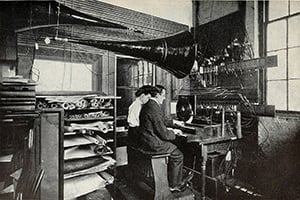
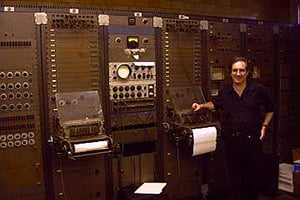
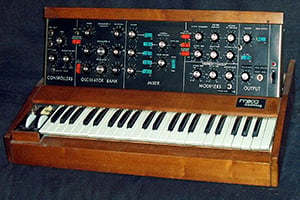
Here are some examples of early synth music. For a deeper dive into iconic synth songs, take a look at Sam’s lesson here.
“Composition for Synthesizer”
by Milton Babbitt (1964)
Theme from Clockwork Orange
by Wendy Carlos (1971)
In recent years, there’s been growth in a genre that features piano as both a classical and pop instrument. Iconic pieces like “Nuvole Bianche” by Ludovico Einaudi and “River Flows in You” by Yiruma are captivating young people who may not be consumers of traditional classical music. These pieces are often have catchy melodies, simple chord progressions, and minimalistic textures.
Please note that in this article, we only have the space, time, and knowledge to discuss Western (English-language) pop music at length.
But it’s important to acknowledge that pop music is context and culture specific. What a French person knows as “pop” will be very different from what a Thai person knows as “pop.” However, most modern pop songs have elements in common that stretch across cultures, and even the French and Thai person will know pop songs in common.
We’ll go over things pop songs have in common in the essential ingredients and key skills sections.
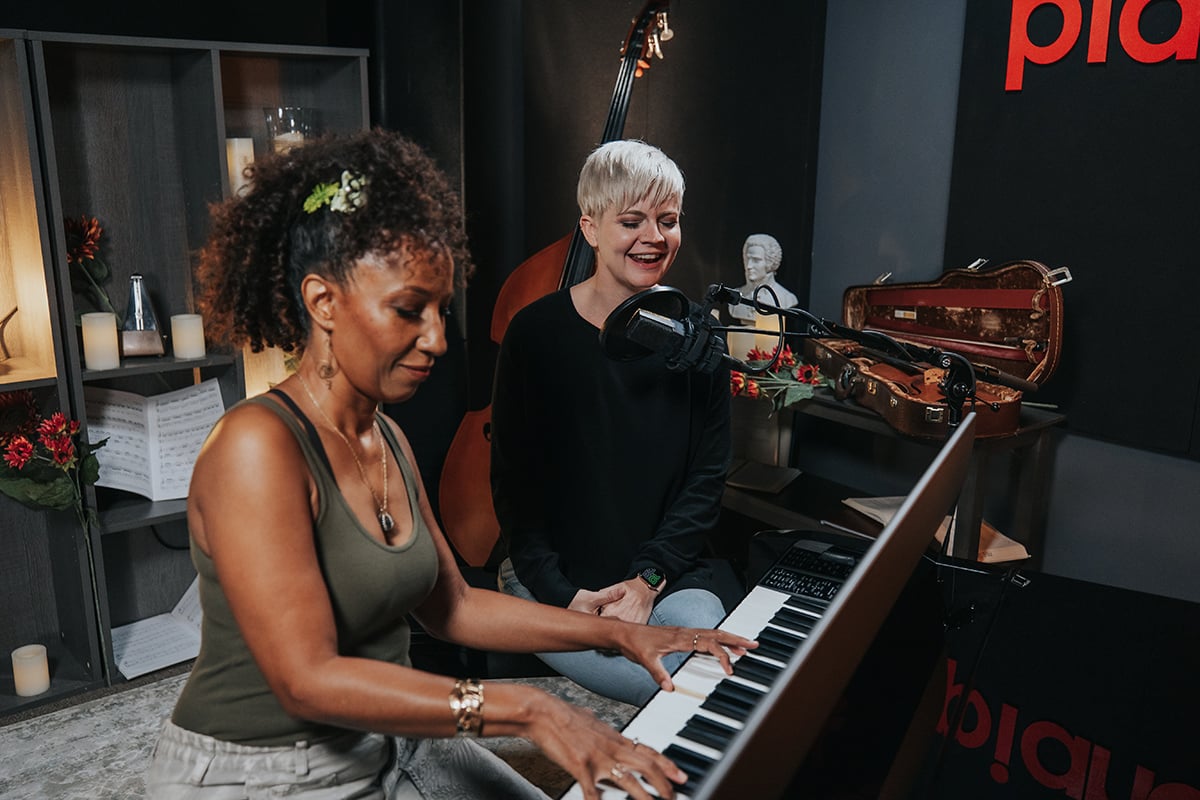
As we mentioned before, many pop songs share the same ingredients. In fact, we can distill most pop songs into the same handful of chord progressions. So, by understanding some basic theory, you can very quickly master a simple arrangement of a pop song on the piano.
Main articles: Diatonic Chords, Explained and The Nashville Number System for Piano: A Beginner’s Guide
To understand chord progressions, you’ll have to understand diatonic chords and the Nashville number system.
Diatonic chords are the chords that naturally occur in a given scale. Take C Major (all white keys). If you make a triad shape on top of the first C, then scooch the same shape up through all the notes of the scale, you’ll end up with these chords:
These are the diatonic chords of C Major. And we can assign each chord a number. This is the Nashville Number System.

We can also represent these numbers as Roman numerals. Capitalized letters mean the chord is major; lowercase letters mean the chord is minor. In major scales, the same pattern of major and minor chords is the same for all keys (ie. the ii chord is always minor). The viio chord has an extra symbol that means it’s naturally a diminished chord.

Using numbers is useful because you’re not tied to a key. You can use numbers to quickly transpose a song for a particular vocalist or ensemble.

When you arrange a song, the piano becomes an orchestra at your fingertips. If you want to learn how to arrange your favorite tracks for solo piano, pianist Summer Swee-Singh will be coaching Pianote members on arrangement in August 2022. Join Pianote as a member today so you don’t miss it!
Main article: All About Piano Chord Progressions
Chord progressions are a series of chords that sound good together. They form a narrative, driving the song forward.
The 1-5-6-4 (or I-V-vi-IV) pop progression is by far the most common progression in pop music. It’s used in songs like “Let It Be” by the Beatles, “Someone You Loved” by Lewis Capaldi and many, many more.
In C Major, the chords are C – G – Am – F. Knowing these chords alone will unlock hundreds of pop songs.
Songs that use the I-V-vi-IV progression include:
Click on the links for detailed video tutorials on each song.
Marc Hirsch of the Boston Globe nicknamed this progression the “sensitive female chord progression” because of its use by women singer-songwriters like Sarah MacLachlan, Joan Osborne, and Beyoncé.
It suits moody ballads and is used by male songwriters too, like in Iggy Pop’s “The Passenger.”
Songs (and tutorials) that use the 6-4-1-5 progression include:
Also called the “Doo-Wop” progression, this was a progression popular in 50s pop music and follows a I-vi-IV-V pattern. Tutorials of songs that use this progression include:
Leonard Cohen’s “Hallelujah” also uses a version of this progression, and it’s the progression under “Heart and Soul” (that piano song everyone plays).
Musicians have identified other chord progressions that give pop music their “sound.” For example, there is a Japanese pop progression that makes an appearance in many soundtracks, anime openings, and J-pop songs. See what other progressions you can find!
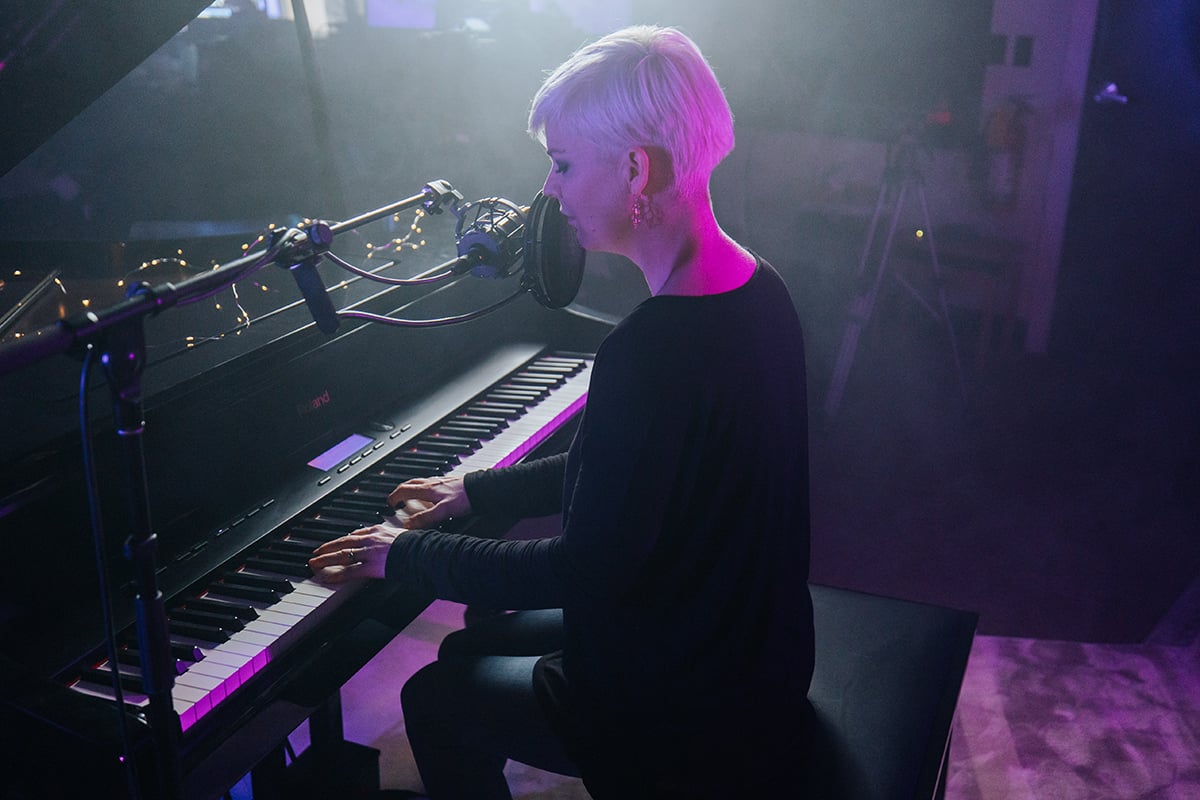
Knowing theory is fine and dandy. But to learn, interpret, and perform pop songs on the piano, it’s vital that we learn some hard skills as well.
Suggested article: Read and Play Complicated Chords on the Piano
The great thing about playing pop music is that you don’t absolutely need to know how to read sheet music. In fact, relying on sheet music may limit you if you can’t find the score for a particular song.
Instead, learn how to read chord charts and lead sheets.
Chord charts are notation with lyrics and chord changes on top. You’ll have to understand chord symbols (ie. C, Am, Fsus2, Dm7, Gmaj7 etc.). To do that, take a look at this lesson. But if you’re a beginner, start with just four chords: C, G, F, and Am. This will unlock hundreds of popular songs. Such as “Don’t Stop Believin'” by Journey:
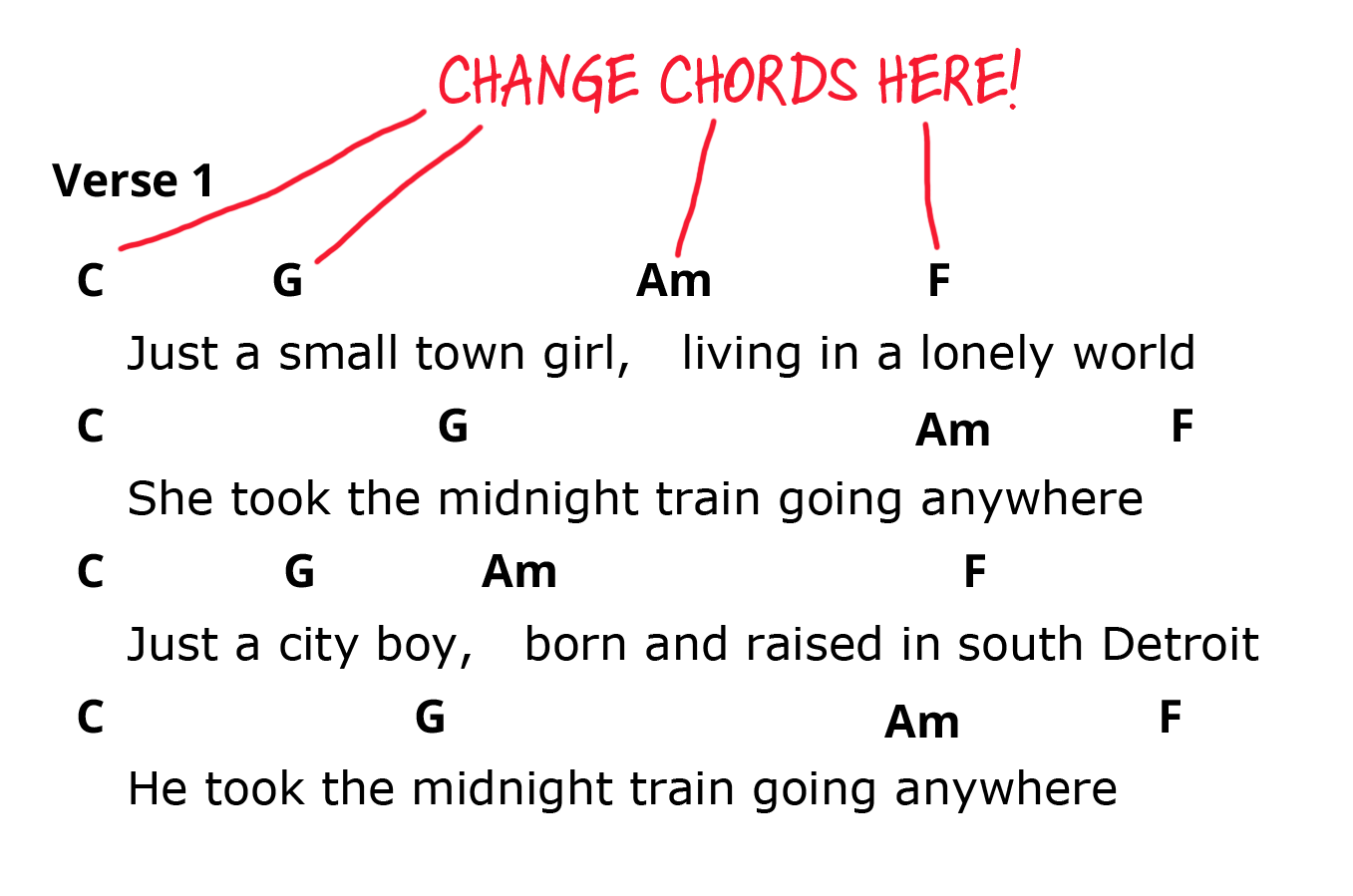
Lead sheets are somewhere between full sheet music and chord charts. In a lead sheet, the melody is notated on the staff, but there is no harmony, only chord symbols on top.
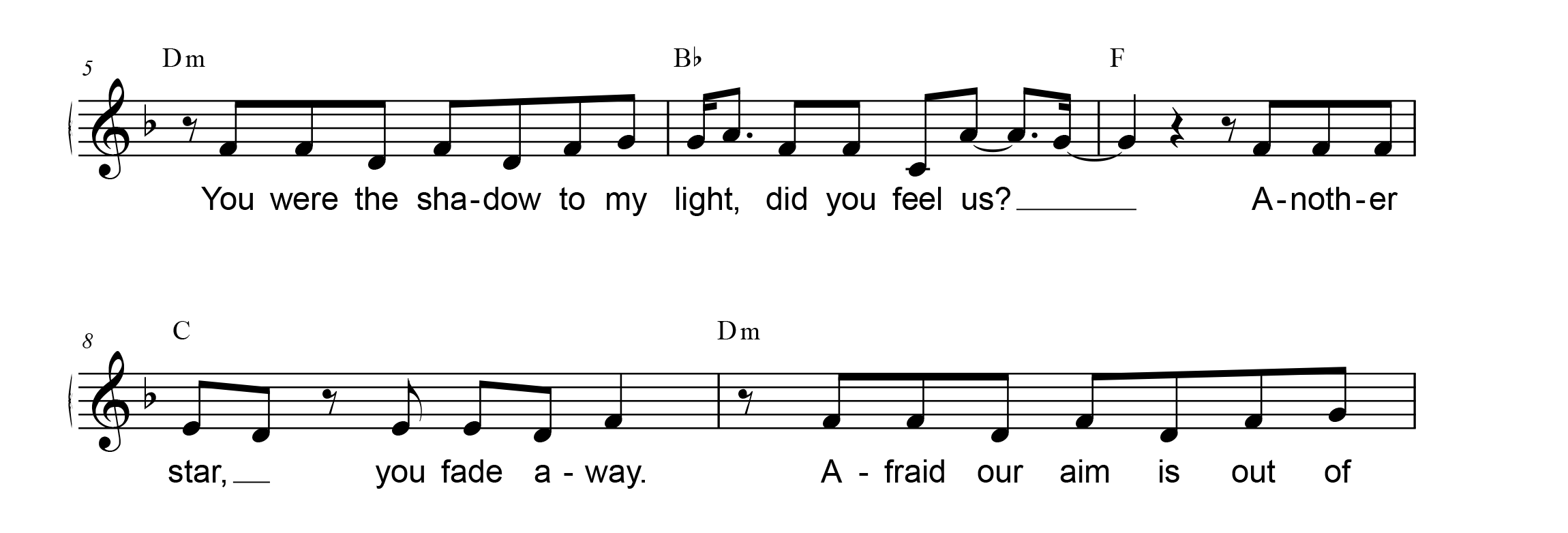
If you want to learn how to read music in order to read lead sheets, take a look at How to Read Notes, our most popular lesson on YouTube!
The awesome thing about chord charts and lead sheets is that they encourage you to “fill in the blanks” with your own riffs and fills. They’re an excellent way to spur creativity without leaving you to completely fend for yourself.
Main article: How to Play Piano by Ear in 10 Minutes
These days, it’s easy to find chord charts, lead sheets, and even full sheet music online. But if your tastes are a little obscure, you can’t always rely on finding notation.
This is where knowing how to play by ear comes in. And while playing by ear may sound like a mysterious talent, anyone can learn it. The trick is using songs you already know to learn intervals (the gaps between notes). The same technique can be applied to sussing out chord progressions.
Learn more with these play-by-ear lessons:
How to Play Piano by Ear in 10 Minutes
Play Songs by Ear on the Piano
Playing chords and melodies is a good place to start. But it’s likely you’ll want to put your own spin on things.
This is where the skill to improvise comes in handy. Improvising can feel scary at first, but it’s all about overcoming the fear of making mistakes and opening yourself up to possibilities.
Start small with some beginner-friendly techniques. We suggest you take a look at these lessons:
Another way to liven up your arrangement is to add riffs and fills between chords.
Playing piano by yourself is fun. But playing piano with other people is even more fun!
If you’re into pop music, playing with others may naturally follow. This is a skill that needs to be learned because the band needs to communicate well to stay tight. Unfortunately, piano players tend to be lone wolves. We encourage you to challenge this stereotype!
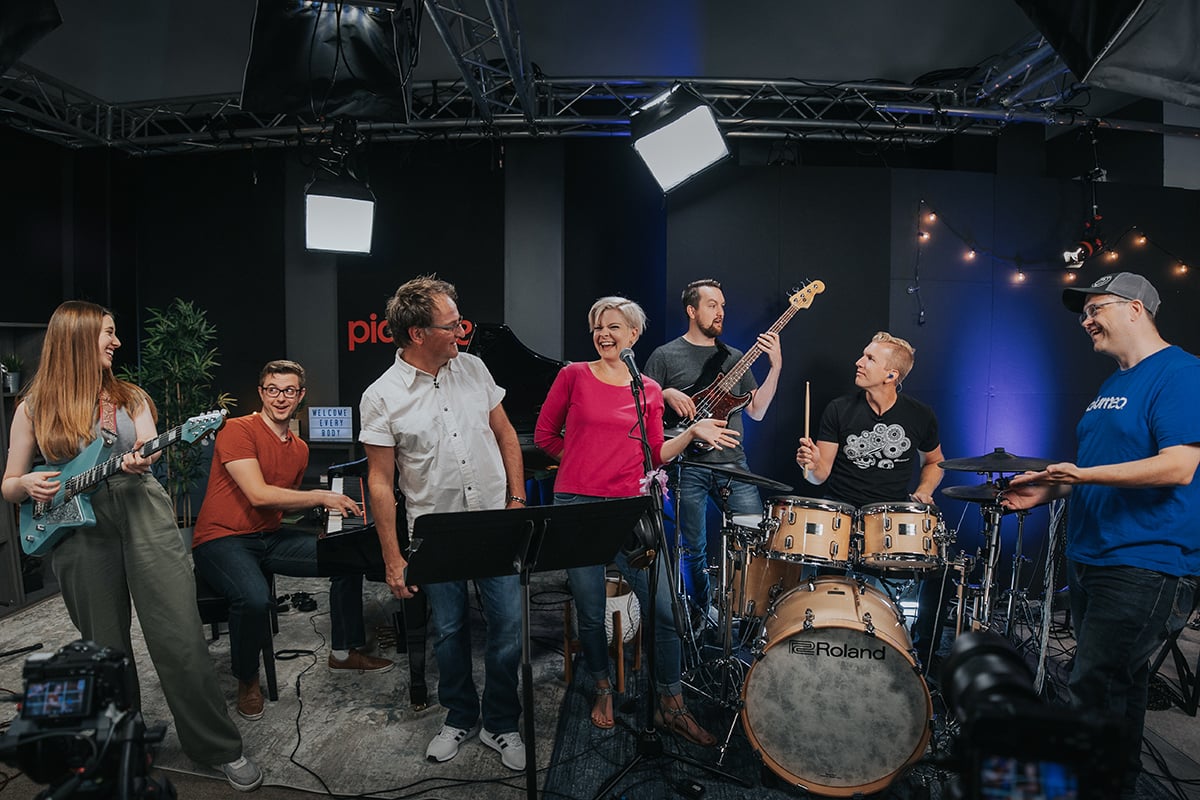
There’s no better way to learn how to play with others than to grab some friends and start jamming. But if you need some guidance, take a look at our lessons on how to jam (for absolute beginners) and how to play with a rhythm section.
This is also a topic we cover in our worship piano course.
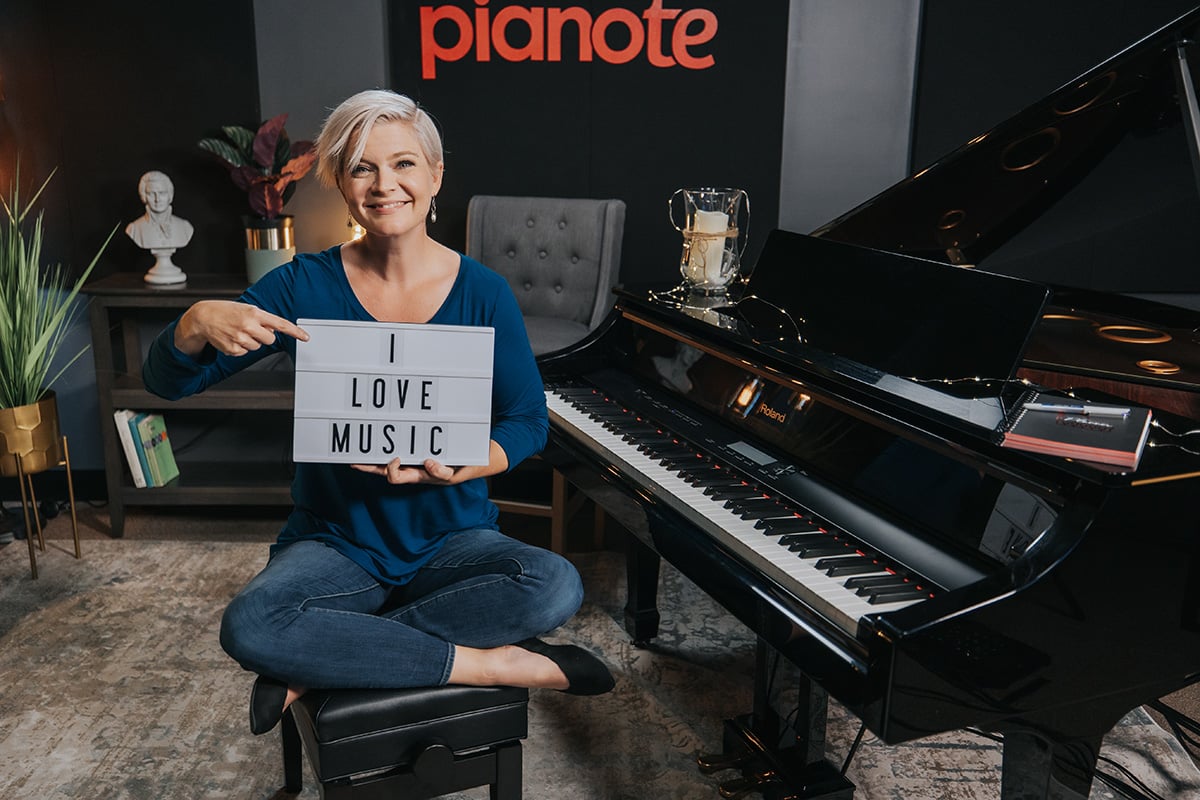
The best way to learn music is by playing, not reading. Start off on a good note with our 500 Songs in 5 Days course pack. Free with your Pianote membership.
For free resources, keep reading!
This lesson shows you how to tackle any pop song. All you need are three things: 1. Chords 2. Chord charts, and 3. Playing by ear.
4 Easy Piano Songs That Are Perfect for Beginners
Play Your First Piano Song In 7 Minutes (Someone You Loved)
Play Hundreds of Songs With Just Four Chords
4 More Songs That Are Perfect For Beginners
“1234” by Feist
Lead sheet and tutorial
“Bohemian Rhapsody” by Queen
Full score and tutorial
“cardigan” by Taylor Swift
Full score, backing track, and tutorial
“drivers license” by Olivia Rodrigo
Lead sheet, full score, and tutorial
“Easy on Me” by Adele
Chords and tutorial
“Faded” by Alan Walker
Lead sheet and tutorial
“Falling” by Harry Styles
Lead sheet and tutorial
“Hallelujah” by Leonard Cohen
Lead sheet and tutorial
“Let it Be” by The Beatles
Chords and tutorial
“Music Box Dancer” by Elton John
Full score and tutorial
“Ocean Eyes” by Billie Eilish
Lead sheet and tutorial
“Perfect” by Ed Sheeran
Lead sheet and tutorial
“Photograph” by Ed Sheeran
Lead sheet and tutorial
“Piano Man” by Billy Joel
Lead sheet and tutorial
“The Scientist” by Coldplay
Lead sheet and tutorial
“Shallow” from A Star Is Born
Lead sheet and tutorial
“Someone You Loved” by Lewis Capaldi
Lead sheet and tutorial
“Someone Like You” by Adele
Lead sheet and tutorial
“Stairway to Heaven” by Led Zeppelin
Lead sheet, full score and tutorial
“Tiny Dancer” by Elton John
Lead sheet and tutorial
“When the Party’s Over” by Billie Eilish
Lead sheet and tutorial
Charmaine Li is a Vancouver writer who has played piano for over 20 years. She holds an Associate diploma (ARCT) from the Royal Conservatory of Music and loves writing about the ways in which music—and music learning—affects the human experience. Charmaine manages The Note. Learn more about Charmaine here.
/marketing/pianote/promos/april/banner-bg-m.webp)
We use cookies for traffic data and advertising. Cookie Policy »
/marketing/pianote/promos/april/banner-title.webp)